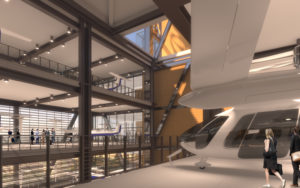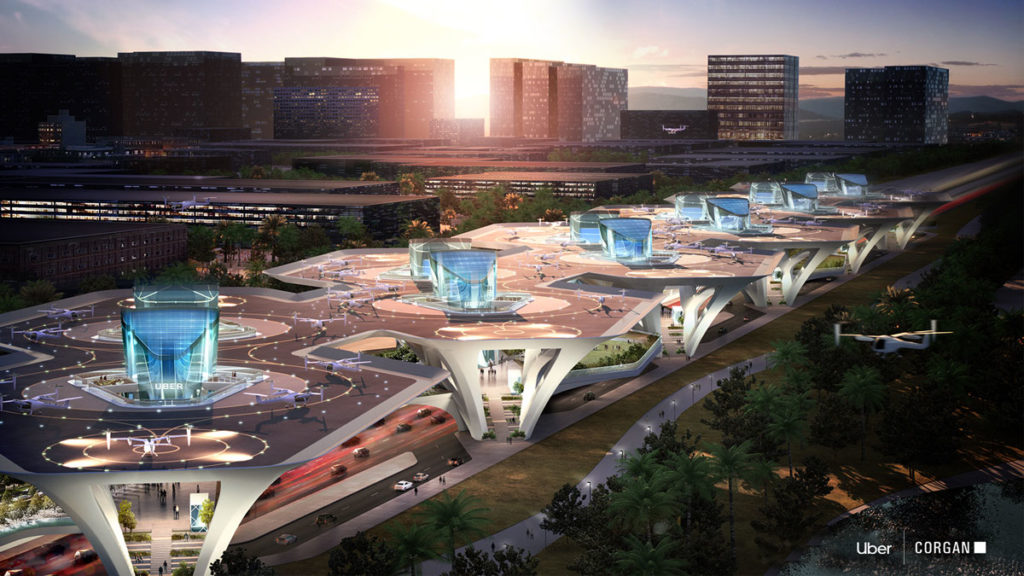 John Badalamenti, head of design, aviation programmes, Uber, on the transportation network’s plans to connect communities through aerial ridesharing, ushering in a new era of skyports, ahead of his presentatation at the 2019 Passenger Terminal Conference
John Badalamenti, head of design, aviation programmes, Uber, on the transportation network’s plans to connect communities through aerial ridesharing, ushering in a new era of skyports, ahead of his presentatation at the 2019 Passenger Terminal Conference
Describe your presentation?
While once a spectacle of science fiction, flying cars are finally here. At the Uber Elevate Summit 2018, Uber shared concepts of how the future of aerial ridesharing includes plans to reduce congestion and restore convenience by taking riders to the sky by 2023. In partnership with Uber, leading architecture and design firm Corgan has developed an innovative ‘skyport’ concept designed to connect major urban transit destinations through on-demand electric flying vehicles. Strategic location of the skyports will transform under-utilised areas of our cities and connect neighbourhoods and communities with a new type of amenity, becoming a destination that reclaims more than just time.
Are you serious… aerial ridesharing by 2023?!?
Yes – very serious! Since the release of the now infamous Uber Elevate Whitepaper in 2016, we’ve been collaborating with five OEM vehicle partners, several real estate partners, electric charging infrastructure partners, NASA, FAA, local regulators, and many more stakeholders – together creating the Uber Elevate Network. We’re targeting eVTOL flight demonstrators beginning in 2020, and fully flight-certified aircraft by 2023.
What lessons do you think skyports could take from today’s airports?
There are a few obvious parallels we can reference in traditional commercial aviation, however, the use case is considerably different. Uber is an on-demand (as opposed to pre-scheduled) transportation service, and that will continue with ‘Uber Air’. We anticipate riders will spend less than five minutes at the skyport, encouraging highly efficient screening and check-in processes, followed by pre-flight quick-queuing areas rather than leisurely lounges. Another key difference is we expect nearly every trip to begin/end with riders being dropped off/picked up via Uber ground transit, eBike, eScooter, or public transit – placing an emphasis on these skyports to really serve as a central mobility hub for their corner of the market.
Where do you conceive the first such skyport might open?
We’ve publicly announced launch markets in Dallas and Los Angeles, and will be announcing an international launch market later this year. Zooming in a bit more, it’s quite easy to imagine retrofitting roof decks of the traditional (and depreciating) parking garage structures as top candidate sites for the very first eVTOL skyports, given (in many cases) their elevation, relatively expansive footprint, and most importantly – structural integrity. Beyond that, promisingly, we’re already seeing interest from many new construction projects in markets across the world asking for structural dynamic load requirements at their rooftops to anticipate the nascent aerial ridesharing future.

What was the brief provided to Corgan?
In short, the brief asked for scalable infrastructure solutions to support eVTOL operations at a massive scale; up to 1,000 landings in less than two acres of allowable footprint. Successful designs would include thoughtful integration into the community, integration with major transportation methods, a modular vision that can scale with the market demand, and applicability to different site locations. Corgan was one of six finalists to present at the Uber Elevate Summit 2018, out of 16 respondents to our competition. We have another Uber Skyport competition currently underway and are expecting another benchmark performance from last year’s finalists!
John Badalamenti, head of design, aviation programmes, Uber will present ‘Connecting communities through aerial ridesharing’ at this year’s Passenger Terminal CONFERENCE, which takes place during Passenger Terminal EXPO, 26, 27 and 28 March 2019, in London. Register here for your conference delegate pass (the exhibition is free to attend).

